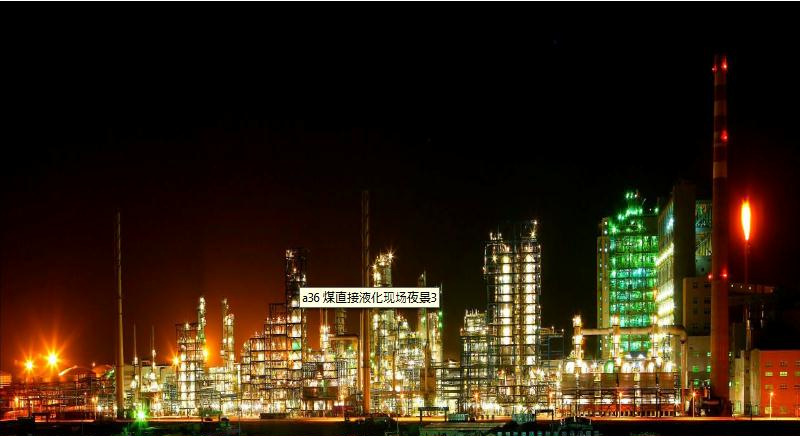Kong, Z. et al. 23 January 2015. EROI Analysis for Direct Coal Liquefaction without and with CCS: The Case of the Shenhua DCL Project in China. Energies 8(2): 786-807.
Many nations see coal-to-liquids (CTL) as a way to avoid becoming dependent on oil producing nations and even essential for national security. All eyes are on China, which has spent billions developing CTL technology, though policies there are somewhat schizophrenic. The central government is trying to put the brakes on CTL because of water scarcity, human health, CO2 emissions, other environmental issues, and business risks. But local governments in coal-rich areas are eager to build CTL plants for jobs and economic growth.
This paper calculates the EROI of making coal-to-liquids (CTL) at the only commercial-level Direct Coal Liquefaction (DCL) plant in the world, built by China’s Shenhua Group.
The other method of making CTL is indirect coal liquefaction (ICL), also known as Fischer-Tropsch (F-T). There are ICL plants in China (and South Africa), but they are not as efficient as the DCL plant looked at in this study.
But not all that efficient! The EROI results are negative when internal energy is included, .68-.81 (no by-product), and still negative even with by-product: .75-.90.
Internal energy certainly should be included. This is the coal energy used to liquefy coal. Some argue it shouldn’t count because society didn’t “pay for it”, the energy didn’t come from somewhere else, such as electricity generated outside of the CTL plant. But that’s rubbish. The energy to liquefy CTL has to come from somewhere, or you won’t have any liquefied coal, and diverting some of the coal to burn for the energy to make it also means less liquefied coal output.
Using by-product to push EROI out of negative territory is a tricky way to avoid the whole point of EROI: what is the ENERGY returned. Trucks and locomotives won’t move an inch burning CTL byproducts like benzene and xylene, unless perhaps they explode from trying such an experiment.
At best, if by-product is included and internal energy ignored, the EROI is 4.13 to 6.14. But that’s without carbon capture and storage, which would lower the EROI to 3.2-4.4. By 2020 the CTL EROI will be lower still as the EROI of coal production declines from 27:1 in 2010 to 24:1 in China (Hu).
The authors could find very few peer-reviewed estimates for CTL EROI. The few that exist are for the ICL process, because DCL has been experimental until now. Cleveland gives ranges of EROI both below and above the break-even EROI of 1 depending on assumptions regarding location, resource quality, and technology characterization. Two other ICL estimates range from 3.5 to 4:1 but don’t subtract carbon capture EROI.
The authors conclude: “In Section 3, we determined the EROI value of coal liquefaction to be less than 1…so any increases in production will not meaningfully affect the net energy available to society and accordingly, CTL should not currently be developed on a large scale in China. A CTL project may generate a financial profit, but from this EROI analysis, the quantity of net energy delivered to society by CTL production is extremely low, perhaps even negative, which may be due to high investments in infrastructure and low conversion efficiency…. therefore, the Chinese government and investors should be prudent when developing it”. They also say that given the dependency of China on imported oil, research should continue, and that perhaps innovations in technology will improve the EROI.
Environmental Effects (Greenpeace)
Water extraction. The Project extracts water through subterranean pipes from Haolebaoji, a region 100 kilometers away, with low precipitation rates 3 but relatively rich in groundwater. There, the Project relies on 22 wells dug well 300 meters deep to extract groundwater. As a result, groundwater levels in the region have dropped significantly 4 co mpared with 10 years ago. Also,the surface area of nearby Subeinaor Lake has decreased by 62% from 2004.
Water Pollution. The Project illicitly discharges industrial waste water into the surrounding environment at three locations.
As a result of pressure from Greenpeace and other organizations, Shenhua announced in 2013 that they were going to reduce the Project’s per ton water intensity of oil production to 6 m³ , compared to 10 m³
Statistics
This plant can produce 25,000 barrels of oil products per day from 6,000 tonnes of dry coal, or about 9 million barrels/year, and cost roughly $1.5 billion dollars. It takes 36,646.9 tonnes of raw coal to produce 10,000 tonnes of DCL oil and by-products.
References
Greenpeace. April 8, 2014. Key developments since Thirsty Coal 2: Shenhua’s Water Grab. Greenpeace.org
Hu, Y. et al. 2013. Energy return on investment (EROI) of China’s conventional fossil fuels: Historical and future trends. Energy, 54:352-364

